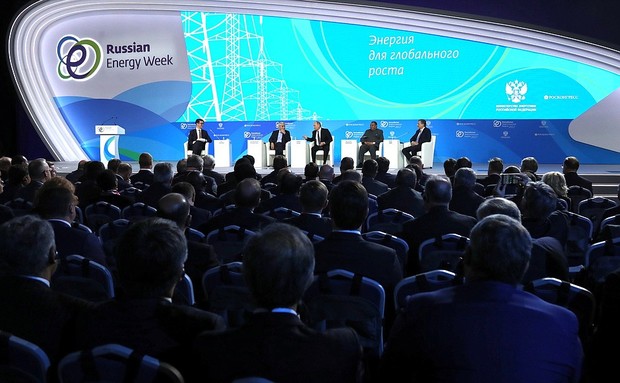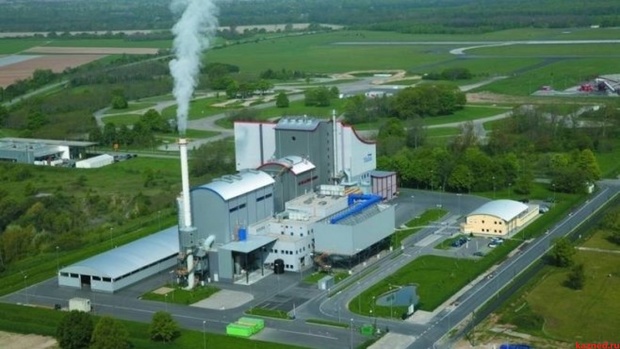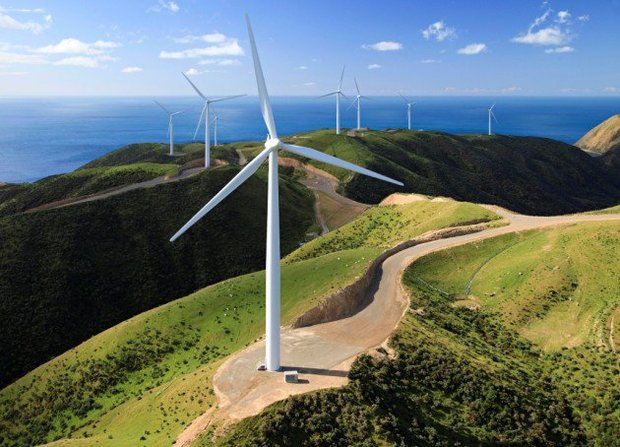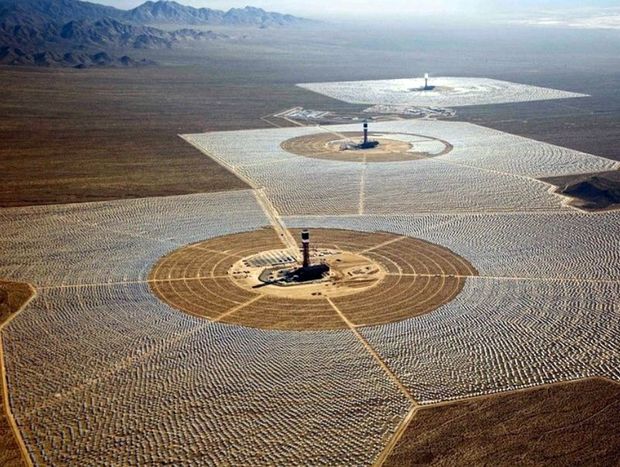Mikhail Andronov: ''Renewable energy will increase the number of market players''
Rusenergosbyt president about development prospects of alternative power engineering in Russia
Russian Energy Week international forum has recently ended in Moscow. Representatives of the biggest international and Russian companies as well as leading experts became its participants. There were about 50 business events during the official programme. Problems of development of renewable energy sources in the world and Russia became one of the key topics of the forum. Realnoe Vremya managed to talk to one of the speakers of the event on the platform, Rusenergosbyt president. Mikhail Andronov told in the interview whether alternative power engineering in Russia had future, if it was prospective to develop wind energy in Tatarstan and told about problems of using unconventional energy sources.
''Russia intends to invest $53 billion in renewable energy by 2035''
Mr Andronov, at the forum it was told a lot that the future of Russian power engineering lies with hydrocarbons. Do you agree with this point of view? How long do you think Russia will continue dominating in this issue?
Russia dominates in the hydrocarbons market even now. We are the biggest country producing oil and gas. However, renewable energy sources also play an important role. We already have a big number of hydroelectric power plants, solar and wind power plants are built. Concessions for construction of alternative power engineering facilities are made, tenders are held. It is very good that localisation of plants is one of the concessions. It inspires investors with confidence, allow to test a technology on the spot.
I think that in the future the focus will need to made in the districts that are isolated from energy systems of the Russian Federation. It is the major part of Siberia, Far North. In general, according to the statistics, over 65% of Russia are not covered by centralised energy supply. By the way, 10 million people live on this territories. Diesel fuel is delivered to the isolated districts in summer. It is partially supplied by river, part is delivered by helicopter. Such energy is very expensive – from 22 to 327 rubles per kWh, which is 5-55 times higher than in Russia on average. And localisation of plants will allow to not only seriously save money but also provide reliability of energy supply of remote districts.
What is more, the future also lies with distributed generation. It is when every house management has its own solar battery or wind power plant, which will enable consumers to be free from external energy supply and leave the energy. In general, such a concept as distributed generation is developed in Europe and America now. People not only generate energy for themselves but also sell energy to the grid for several hours, at the most demanded time. They buy it back when energy is cheaper. It turns out that you are not only a consumer but also an energy consumer and generator. This trend is spread around the world due to reducing the price for solar batteries and wind power plants. And I am convinced that it will come to Russia in the short run. I think we will see real examples of economically beneficial work of small generating facilities during 5-7 years.

What is the share of alternative power engineering in Russia, according to your forecast? Do peculiarities of Russia (geographical, climate) affect possibilities of using alternative energy sources?
As far as I remember, the share of renewable energy is to reach 2-2,5% in the general structure after constructing alternative power generation facilities, excluding hydroelectric power plants. The number is not big, of course. In addition, we have certain peculiarities. I talked to my colleagues who built a solar plant in Orenburg Oblast. The region seems to be good, there are many sunny days. But this region also has much snow. Here is the question: what to do? Snow can't be shovelled because the solar panel can collapse. This is why it is good that now alternative power engineering facilities are in different climate conditions. It is possible to understand what needs to be improved and changed on the spot.
How much does alternative power engineering attract today in terms of investments?
Today annual investments in alternative power engineering around the world have reached $300 billion, which is comparable with financial flows spent to produce oil and gas. And global investments in creation and development of generating capacities on the basis of alternative sources can reach $1,9 trillion in the next 10 years.
How much has been invested to develop alternative power engineering in Russia?
Russia intends to invest $53 billion in renewable energy by 2035. It is about 3 billion every year.
''The capacity price has increased by about 91% in 10 years''
What type of alternative energy do you think is priority for Russia?
The biofuel sector has achieved important results in the last years, particularly, production of wood pellets. Russia is the leading supplier of this product to European markets.
Small hydroelectric power plants (by international standards, up to 25-30 MW hydroelectric power plants) are also prospective. The energy potential of Russian small rivers is interesting from a perspective of substitution of imported energy resources to remote rural regions of the country.

''The construction of the waste incineration plant will affect tariffs, of course. But it will affect not only Tatarstan but also all the consumers of Russia.'' Photo: kazned.ru
This year it has been decided to construct a wind park in Tatarstan. Do you think the development of wind power engineering in the republic is prospective?
Tatarstan is one of the most industrially developed districts of Russia where a big number of factories are concentrated. The industry constantly develops. Consequently, the republic needs new generation. But it is up to the Russian Ministry of Energy to decide whether it will be wind, solar or conventional. In any case, Tatarstan needs to develop this sector.
In addition, Tatarstan also plans to build one of the five waste incineration plants. Do you think it will affect the electricity pricing somehow?
In general, if we are talking about electricity pricing, such points that have nothing to do directly with consumption are added to the energy bill every year, especially for capacity. For instance, municipal solid waste recycling. Ecology is important, of course. But, in fact, not those who cause waste but also those who consume electricity pay today. Electricity price for industrial consumers grows. The capacity price has increased by about 91% in 10 years. As a result, the industry becomes less competitive.
The construction of the waste incineration plant will affect the tariffs, of course. But it will affect not only Tatarstan but also all the consumers of Russia. For instance, according to data of the Market Council, the share of waste incineration heat power plants will be 2,4% in the structure of electricity price by 2023.
''2017 can be called wind power engineering's birth year''
Mr Andronov, what conditions do you suppose need to be created in Russia today to increase the share of renewable energy?
We already have them. There are good programmes in solar, wind power generation. The question is whether Russia will be able to build these plants. I think everything will be fine. The most important thing is that it needs to be economically justified, not so expensive as it is today. We will come to it gradually. I want to believe that the price for alternative electricity will be similar and cheaper than conventional at times both in Russia and Europe.
In our opinion, the creation of a state programme to develop industrial energy storage technology can become the tipping point. It will help to solve the main problem of renewable power engineering – uneven generation. It is known that solar generation is effective only with good illumination and solar power plants – in districts with a certain wind rose. This is why generation from such sources is uneven, and it needs to be compensated. For instance, to accumulate part of the generated energy with the help of industrial accumulators and spend it during evening and morning consumption peaks.

''As for wind energy, here our country has big potential, but no more than 0,00001% is used.'' Photo: alternativenergy.ru
Mainly chemical accumulators have developed. Their price has fallen almost 5 times in the last 7 years. Enel's project that built a 1 MW/2 MWh energy accumulator is an illustrative example. It will be enough to provide 50 municipal blocks of flats with electricity during 2 hours.
Will Russian technologies be able to compete in the world market in alternative power engineering?
Yes, as time goes by. Solar energy generation that was created in Russia from scratch and the requirements for it in localisation yield fruits. Several enterprises that make components for solar power plants already work in the country – from silicon wafers, support constructions and all types of cable and conductors to a full cycle of solar module production.
Now this successful experience is transmitted to another big sector of renewable energy – wind power generation. In addition, 2017 can be called its birth year, though there were pilot projects.
How much have solar and wind power plant capacities grown in Russia in the last 5 years?
50 GW and about 70 GW solar power plants were put into operation around the world in 2016. About 450 GW are generated in wind power plants and 290 GW in solar power plants around the world in total. Approximately 130 MW of renewable energy facilities were constructed and put into operation in Russia in the two previous years. Construction of the same number – 130 MW solar and wind power plants – is expected to be completed in 2017. 70 MW of them have already been launched. The installed capacity of solar power plants in Russia has reached about 500 MW, and it is planned to increase these indicators to 1,5 GW until 2024. The greatest growth was in the 2015-2017s.
Two most powerful solar power plants work now in Crimea. Perovo power plant's output is about 100 MW, the other solar power plant, Okhotnikovo, is 20 MW less. In addition, a 70 MW plant was put into test operation in Nikolayevka settlement in August 2015. A solar power plant with a capacity of 110 MW was built in Vladislavovka settlement.
As for wind energy, here our country has big potential, but no more than 0,00001% is used. At the same time, several wind parks are designed and launched. They are a set of separate wind generators that are concentrated on one territory and connected in one general grid, particularly in the northwest and south of the European part of the country (Leningrad Oblast, Pskov Oblast, Rostov Oblast, Northern Caucasus) as well as in Far East (Primorsky Krai).
Do alternative power energy projects pay back in Russia?
Payback of such project is not a matter of several years but much longer periods. The projects fulfilled in isolated energy districts demonstrate better payback, energy price there is high.
When does construction of a solar power plant pay back?
According to the International Energy Agency, energy generation in solar power plants has reduced by 80% in the last 10 years. The experts forecast that several countries will achieve parity of renewable energy and conventional energy generation in the next 10 years at their exercise price.

''The installed capacity of solar power plants in Russia has reached about 500 MW, and it is planned to increase these indicators to 1,5 GW until 2024.'' Photo: sciencedebate2008.com
''Big plants will have their own consumers''
There is an opinion that rapid development of renewable energy destroys wholesale energy markets. Do you think this problem can become topical for Russia?
It was economically effective to build big plants 100 years ago when the architecture of modern power engineering was forming. Small plants had completely different brake specific fuel consumption. Technologies have changed now. We see that small, medium generating capacities became more efficient because they enable to avoid payments of grid tariffs. But they will never destroy the wholesale market because all the existing big enterprises will be supplied by big systematic plants like before. Renewable energy will just increase the number of market players. Now there are more than 10 generators but there will be a million. And they all will start to cooperate with each other: to sell energy, buy it. It will enable to not only save resources but also reduce the load on the grid, reduce the energy price.
Does it mean that the scale won't affect the conventional energy market?
No. Distributed generation plants are built near consumers. And big plants will have their own consumers. That's it. As for distributing grids that provide rural districts, settlements, they are more reliable, in general. If electricity is turned off, local generation remains. Even if it doesn't cover all the consumption but will provide key service.
Do you suppose we will be able to catch up with Europe? If yes, when?
Undoubtedly, I think in 10 years. Although now Russia can't be compared to Europe in terms of the pace of introduction of solar and wind power generation projects. A set of measures is taken by the country to develop the sector. According to the state targeted indicators of solar energy development, solar power plants with a total capacity of 1,5 GW must be built in Russia until 2020. Now Russia pays great attention to developing solar power plants, especially in Crimea and Siberia. We also need to note wind power generation, small hydroelectric power plants, geothermal and petrothermal plants, which are unique for Russia. Experts estimate that only geothermal energy reserves exceed organic fuel reserves 10-15 times.